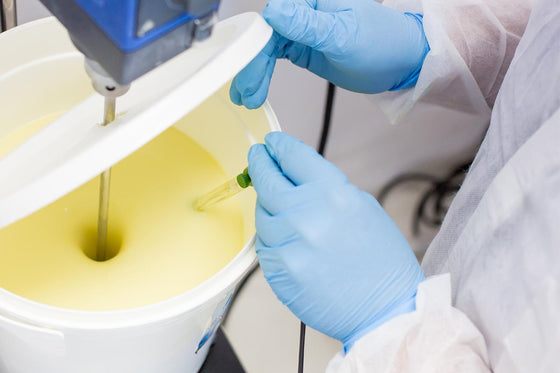
Niacin or nicotinic acid and nicotinamide are both forms of Vitamin B3.
Nicotinamide (also known as niacinamide) is the active, water soluble form of vitamin B3, whereas nicotinic acid (also known as niacin) is converted into nicotinamide in the body (1). As vitamins, niacin and nicotinamide are identical. Their pharmacological effects, however, are considerably different. Unlike nicotinamide, niacin lowers cholesterol, causes vasodilation, skin flushing, headache, and hypotension.
Vitamin B3 serves as a precursor of several co-enzymes (facilitators of enzymatic reactions) essential for numerous metabolic pathways. These co-enzymes play a key role in the metabolism of glucose, cellular energy production, and synthesis of lipids.
Different tissues have different thresholds for vitamin B3 deficiency, with the skin being highly susceptible (1). Nicotinamide applied topically has been shown in scientific studies to improve many skin conditions, including acne vulgaris, rosacea and melasma (hyperpigmentation) and atopic dermatitis (2).
As a skin treatment Vitamin B3 is well tolerated, and may be found acceptable by those who cannot tolerate other treatments (such as topical retinoids or fruit acids). However, it is not recommended for use by pregnant and nursing women.
Topical vitamin B3 has also been shown to be as effective as antibiotics in the treatment of acne (3,4), in reducing the number and severity of visible blemishes, but also in reducing skin sebum production, facial shine and oiliness (5).
The clinical signs and symptoms of rosacea include increased facial skin dryness, redness and sensitivity. Moisturisers containing nicotinamide have been shown to improve skin barrier function in rosacea patients, leading to diminished reaction to irritants including cleansers and cosmetics (6, 7).
Skin hyperpigmentation occurs in multiple conditions, and it can be particularly difficult to treat on darker skin. Melasma is a chronic skin disorder that results in symmetrical, blotchy, brownish facial pigmentation that can lead to considerable embarrassment and distress. Nicotinamide has been shown to be effective at reducing uneven pigmentation in these conditions (8, 9, 10).
The levels of Vitamin B3-dependent coenzymes in the skin can decrease with age, and in several studies topical nicotinamide has appeared to reverse some of these declines. Several studies have shown that topical nicotinamide improved fine lines and wrinkles, hyperpigmented “age” spots, red blotchiness, and skin sallowness (yellowing) as well as elasticity (11). One study showed nicotinamide to increase the skin’s production of ceramides (natural emollients and skin protectants) and therefore improving skin hydration (12). Another study reported improvement of eyelid wrinkles after 8 weeks of application of a cosmetic containing 4% nicotinamide (13).
Available without a prescription. We have formulated a BCP Vitamin B3 gel that is a 4% w/w nicotinamide gel in a non-comedogenic hyaluronate gel base. This gel can be made to any other strength as desired.
Our custom-made 4% Vitamin B3 in hyaluronate gel is available in 50 ml pump packs through our secure BCP Shop online, or by contacting us.
We recommend that Vitamin B3 gels be applied twice daily. If this application rate causes excessive skin drying, it may be applied once daily or every other day.
For another way to incorporate Vitamin B3 into your skin care, please consider our BCP Custom Skincare options. We give you control of your skin care, so why not contact us with any requests?
Why not read more about the benefits of vitamins in skin care products?
Border Compounding Pharmacy products are unique, because they are formulated by pharmacists.
Comments will be approved before showing up.

Medicinal cannabis products are legal, high quality medicines that can be prescribed for people by their doctor. Medicinal cannabis is derived from cannabis plants and can be used to treat the symptoms of certain medical conditions, and the side effects of some treatments.
